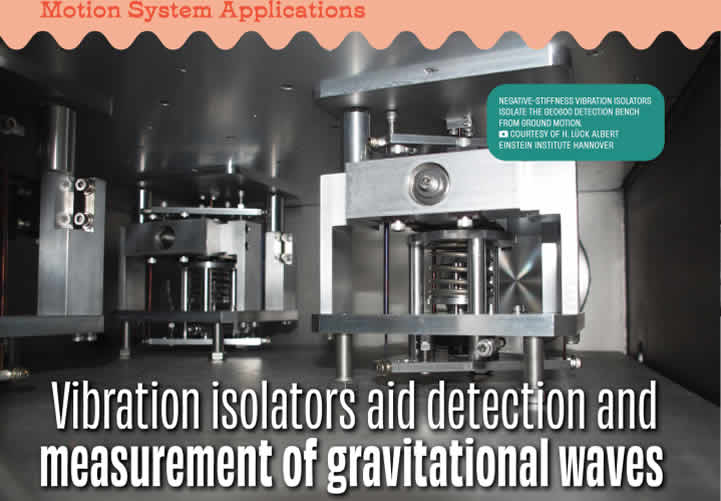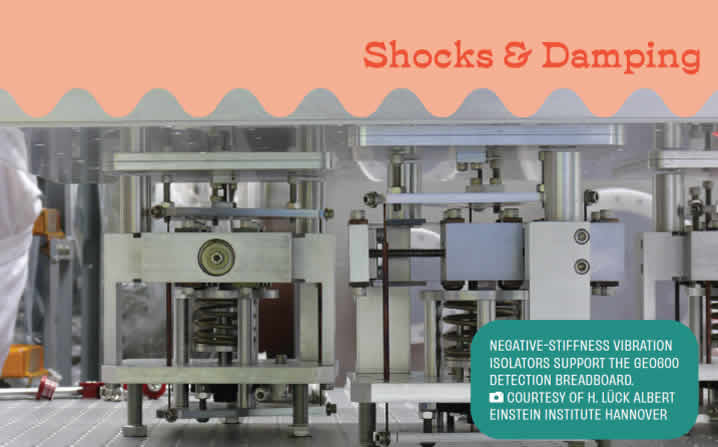|

Vibration Isolators
Aid
Detection and Measurement of Gravitational Waves

Detecting and measuring gravitational waves requires extremely sensitive instrumentation. In the 1970s,
American physicist Rainer Weiss pioneered the concept of using lasers for
interferometric gravitational wave detection. Extensive research over the past
several decades has produced extremely advanced interferometric techniques,
providing a means to observe phenomena in the universe that previously could
not be studied otherwise.
"With laser interferometry we can retrieve
information from spaces in the universe that are otherwise not accessible, and
we can look back in time much further, said Dr. Harald Lück, Research
Group Leader for the Laser Interferometry and Gravitational Wave Astronomy
division of the Max Planck Institute in Gravitational Physics (alternately
known as the Albert Einstein Institute) in Hannover, Germany.
Together
with its UK colleagues, and Leibniz Universität Hannover, the Laser
Interferometry and Gravitational Wave Astronomy division of the Albert Einstein
Institute operates the gravitational-wave detector, GEO600. Funded by the Max
Planck Society, and the Science and Technology Facilities Council, GEO600 is a
ground-based interferometric gravitational wave detector located near Hannover,
Germany. The GEO600 project aims at the direct detection of gravitational waves
by means of a laser interferometer.
Scientists at GEO600 have pushed
research into interferometry related technologies to their limits, encompassing
laser stabilization, absorption-free optics, control engineering, vibration
damping, and data acquisition and processing.

Negative-Stiffness vibration isolation was developed
by Minus K Technology. These vibration isolators are compact, and do
not require electricity or compressed air which enables sensitive
instruments to be located wherever a production facility or laboratory needs to
be located. There are no motors, pumps or chambers, and no maintenance
because there is nothing to wear out. They operate purely in a passive
mechanical mode...
Full
article...
|
